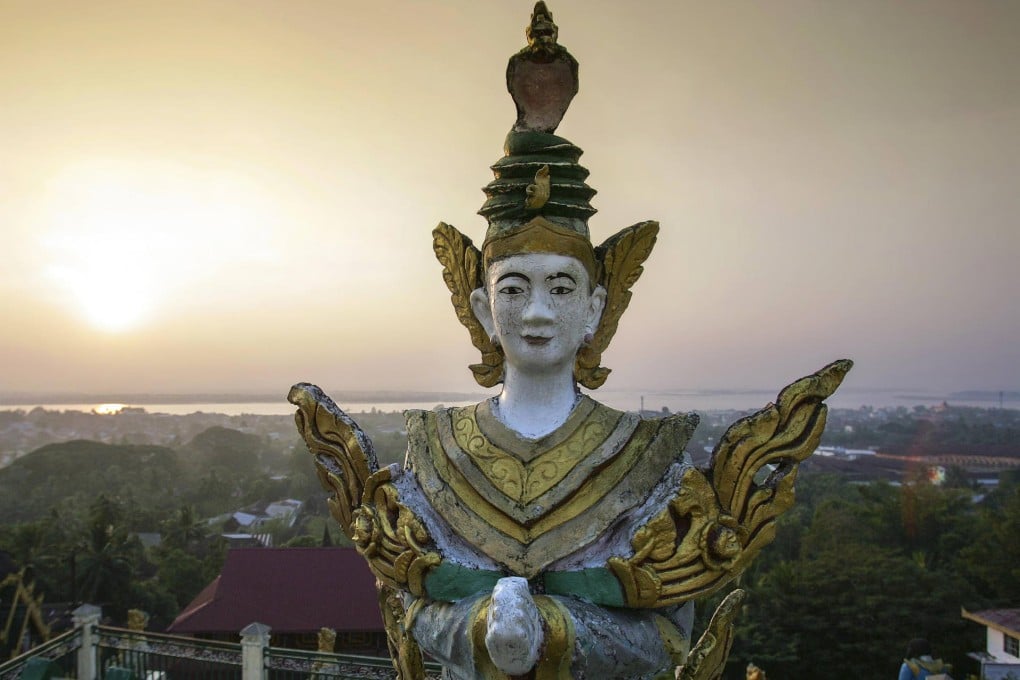Sleeping beauty: lazy ‘Burmese days’ in Mawlamyine
Immortalised by Rudyard Kipling, the Myanmese city of Mawlamyine is waking up to a new day, writes David Eimer. Pictures by Andrew Chant

Come sunset, and the temple of Kyaik Thanlan is the only place to be in Mawlamyine. Its golden pagoda stands astride a ridge lined with other shrines and provides panoramic views across this now sleepy port in southeastern Myanmar's Mon state. But it is the vista towards the Thanlwin River that is the most captivating.
In the hazy late afternoon, as the red sun dips below the horizon, gazing down at Mawlamyine from Kyaik Thanlan is a daily ritual for those city residents who come to the temple to make merit. For visitors, the view appears to be one from the 19th century. Then, Myanmar was known as Burma and was part of the British empire, while Mawlamyine, which the British called Moulmein, was one of the busiest ports in Southeast Asia.
The elephants that once loaded prized teak onto ships bound for England are long gone but Mawlamyine is still home to the finest collection of colonial-era architecture outside of Yangon, Myanmar's former capital, 300 kilometres to the northwest, and teak trees still poke up above the grand churches and houses. Wooden boats bob on the river as they did 100 years ago. Even the notorious prison in the centre of town is a Victorian creation, albeit one that until recently housed political prisoners and Rohingya refugees.
British writer Rudyard Kipling passed through Mawlamyine in 1889 and his brief visit provided the inspiration for his poem Mandalay. "By the old Moulmein pagoda, looking lazy at the sea" remains one of the most well-known opening lines to any poem. Kipling's verses, too, are as suggestive of Myanmar now as when he wrote them, in 1890. Spend any time at Kyaik Thanlan and you'll hear the "tinkly temple-bells" he refers to.
George Orwell, author of Burmese Days and another British writer indelibly associated with the country, took inspiration from Mawlamyine, too. He used it as the setting for Shooting an Elephant, a semi-autobiographical account of an episode that occurred when he was serving here as a colonial police officer in the 1920s.
Kipling was a fervent imperialist; Orwell a fierce critic of Britain's empire, but the association of both men with Mawlamyine is drawing literary detectives to this little-known city.